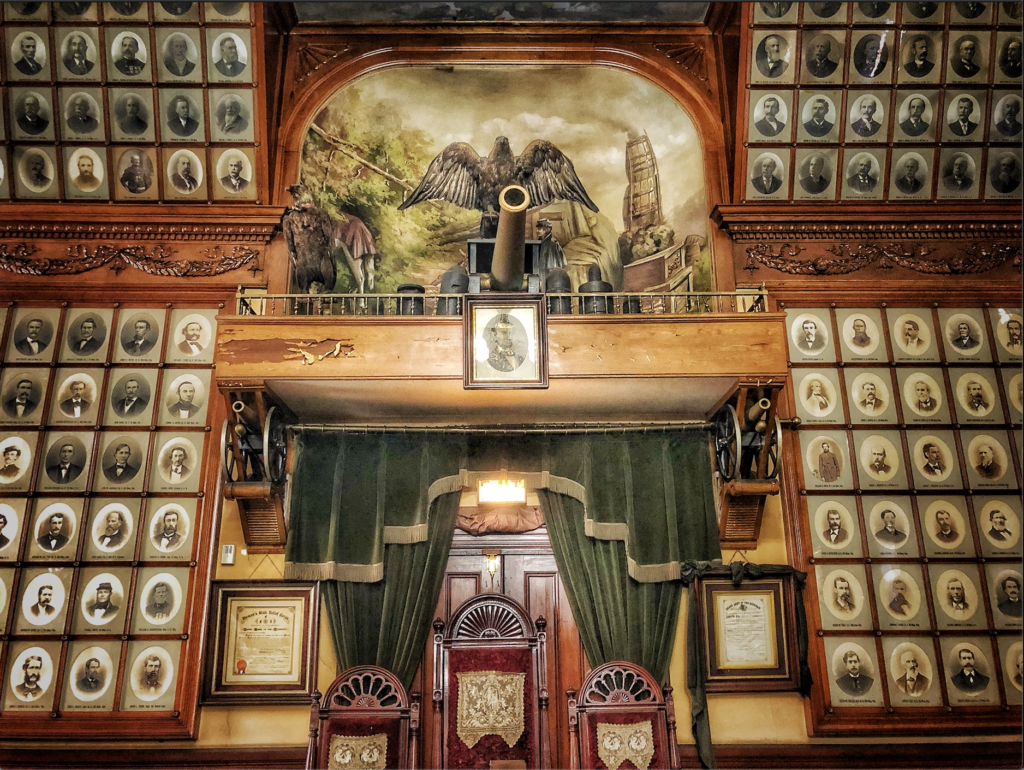Today’s post is brought to you by Anna Davis, the Communications Director of the Architectural Heritage Foundation in Boston, MA. She wrote this really wonderful post recently distilling why historic preservation matters. When all else goes away, she writes, “what remains is the stories we keep.” How profound and beautiful. Historic preservation is about more than preserving old buildings – it’s about community and our past and the stories that weave us together. That’s important to recognize, now more than ever. It will help guide us when we emerge from this period of extreme slowing-down, introspection and, honestly, grief to engage with our communities and our world differently and more completely.
Stay well, stay home. You will be alright.

When life as we have known it comes to a halt; when the bonds holding society together grow brittle; when we cannot gather for fear of harming each other – what remains to us are the stories we keep. The reminders of those stories take many forms. A building. A battlefield. A burying ground. These physical affirmations of our histories and values are all around us. They help us to see ourselves as part of a community spanning generations and, in so doing, make us feel less alone.
Yet preservation can seem frivolous during a crisis like COVID-19. Why spend time and money on saving historic sites when people are getting sick, losing their jobs, and struggling to stop every aspect of their lives from unravelling? Answering this question requires a shift in perspective from regarding our historic places as luxuries to recognizing them as necessities. Catalyzing that shift in perspective is one of the main challenges facing preservationists over the coming weeks.
Successfully making the case for preservation will depend on how well those involved in restoration or adaptive reuse tell their projects’ stories. This means crafting a narrative focusing not on properties’ historical and architectural significance (though important), but on the material and intangible benefits that successful projects bring to their surrounding communities. Projects need a vision that extends beyond the historic places to the people who will use them.
A vision does not need to lock a project into a specific program, but it should offer a general idea of the role that the site could play in the community. For example, could a vacant building become much-needed housing? A mixed-use commercial hub that invigorates a business district? And arts or educational center? Which populations will the building primarily serve, and how will it benefit the most vulnerable members of society? And specifically, how will the project help the surrounding community to heal post-Coronavirus?

Though all preservation efforts are different, they share certain commonalities that are helpful to consider when making the case for a project:
Preservation strengthens the economy
Most likely to resonate with the widest range of people are the economic benefits of preservation. The National Trust for Historic Preservation notes that each year, historic preservation creates millions of jobs, attracts hundreds of millions of dollars in investment, increases property values, augments the affordable housing stock, and generates more money in tax revenue than it costs.
Preservation is green
Not only does preservation make economic sense, but it is an ecologically sustainable form of development. Demolition and new construction generate massive amounts of landfill waste and carbon emissions; by contrast, adaptive reuse of historic real estate reduces these climate impacts. Moreover, historic structures designed prior to the invention of HVAC systems are generally more energy efficient than many modern buildings. Preservation is a climate-friendly option.
Preservation brings people together
The preservation of a beloved historic property often inspires people who otherwise would not come into contact with each other to pursue a common goal together. Moreover, it gives people – not least those who often feel disenfranchised – a stake in improving their neighborhoods. This benefit, though unquantifiable, is particularly important to emphasize at a time of social distancing. As communities become ever more fragmented, projects that are unifying, uplifting, and meaningful can raise morale and connect people to one another.
Now is the time to speak up for historic places by articulating why preservation projects matter to the communities in which they are located. As Richard Moe, former President of the National Trust for Historic Preservation, once said, “There may have been a time when preservation was about saving an old building here or there, but those days are gone. Preservation is in the business of saving communities and the values they embody.”

The Architectural Heritage Foundation is a 501(c)3 dedicated to stimulating economic development in disinvested communities through historic preservation. Follow AHF and its projects on Facebook, Twitter, Instagram, and LinkedIn.

Anna Davis captured my attention with her first paragraph, especially, “the stories we keep” I read every word and it’s inspiring. I’m not a great speaker or leader, but want to remain involved with the FOTNBTH even in some small way. A nephew of mine once said, “I don;t go to meetings, just give me a job to do and I’ll do it” He has always come through on his word, I’m going to try to print your writing of today….to refresh my enthusiasm PRN:)
Thank you,
ELH
LikeLike
Kudos Edie, Spreading the word.
LikeLike